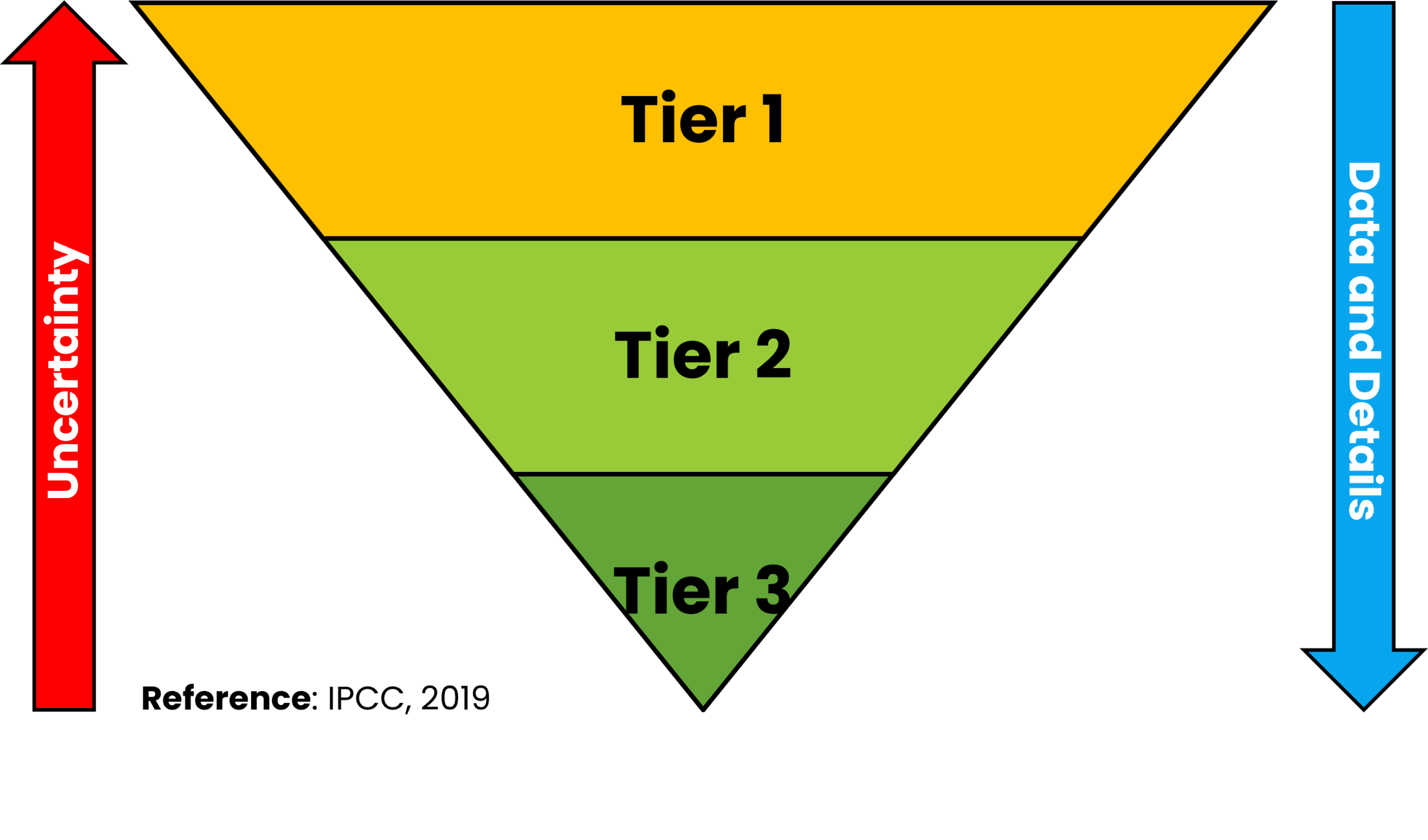Data & Technologies
Data & Technologies

- The Intergovernmental Panel on Climate Change (IPCC) categorizes 3 levels of GHG emission inventory methods:
- Tier 1 is the most basic method, based on global average emission factors.
- Tier 2 is a method based on national emission factors.
- Tier 3 is the highest level because it is based on the highest quality data and level of analysis.
- Tiers 2 and 3 are sometimes called “higher tier” methods. The IPCC encourages the use of higher tier methods for estimating GHG emissions and removals. In order to reduce uncertainty, the development of “higher tier” methods requires big data and more advanced technology.

- The Intergovernmental Panel on Climate Change (IPCC) categorizes 3 levels of GHG emission inventory methods:
- Tier 1 is the most basic method, based on global average emission factors.
- Tier 2 is a method based on national emission factors.
- Tier 3 is the highest level because it is based on the highest quality data and level of analysis.
- Tiers 2 and 3 are sometimes called “higher tier” methods. The IPCC encourages the use of higher tier methods for estimating GHG emissions and removals. In order to reduce uncertainty, the development of “higher tier” methods requires big data and more advanced technology.

